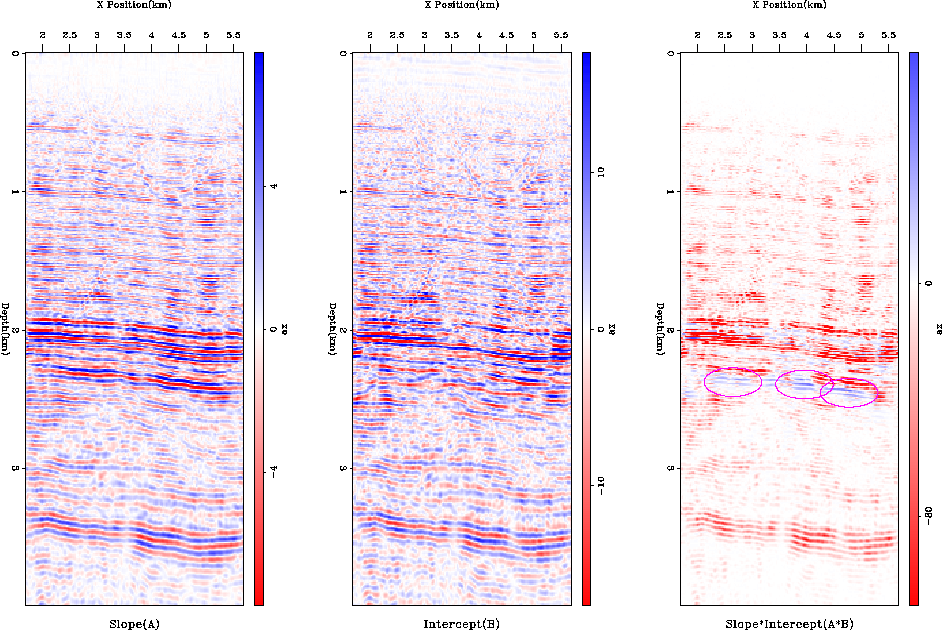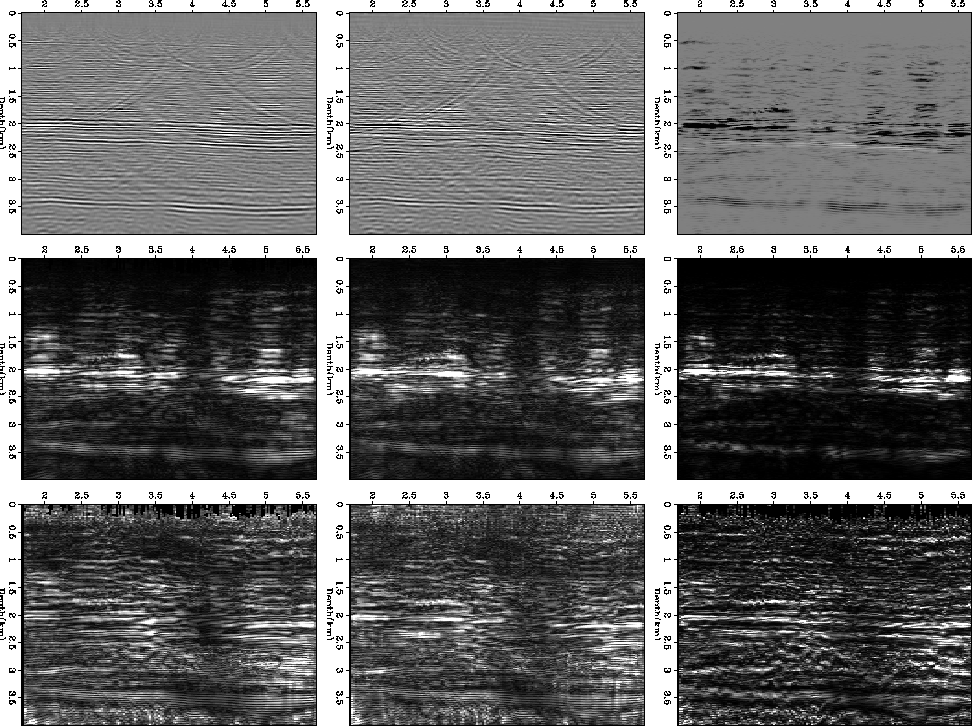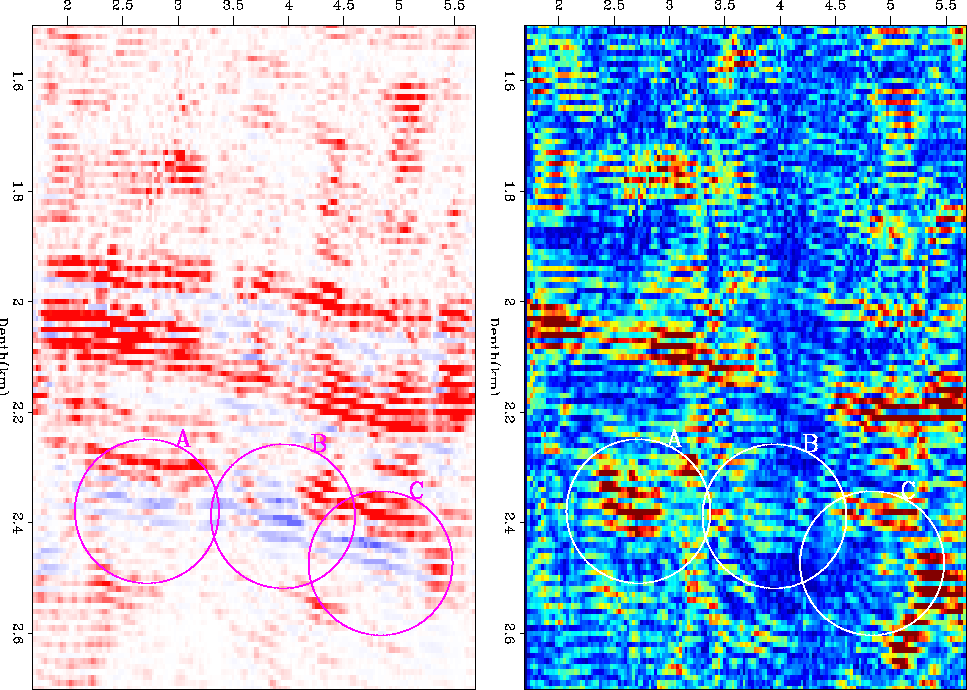 |
Figure 11 AVA analysis for the migrated image in Figure 7. The left panel shows the slope, the center the intercept, and the right panel the slope*intercept.
![[*]](http://sepwww.stanford.edu/latex2html/movie.gif)
 |
![[*]](http://sepwww.stanford.edu/latex2html/movie.gif)
I then performed the same procedure on all of the migrated images obtained from the various realizations (Figure 12). The left panel shows intercept, the center panel slope, the right panel, slope*intercept. The top shows the average of the realizations. The center panel shows the variance of the realizations. The bottom panel shows the variance scaled by the inverse of the smoothed amplitude. What is interesting is the varying behavior at the three zones with hydrocarbon indicators. Figure 13 shows a closeup in the zone with the hydrocarbon indicators. The left blob `A' shows a high variance in the AVA indicator. The center blob `B' shows a mild variance, and the right blob `C' shows low variance. This would seem to indicate that at location `C' the hydrocarbon indicator is more valid. Without drilling of each target a more general conclusion cannot be drawn.
 |
![[*]](http://sepwww.stanford.edu/latex2html/movie.gif)
 |
![[*]](http://sepwww.stanford.edu/latex2html/movie.gif)
Conclusions I showed how AVA parameter variability can be assessed by adding a random component to our fitting goals when estimating velocity. The methodology shows promise in allowing error bars to be placed upon AVA parameter estimates.
I would like to thank Ecopetrol for the data used in this paper.